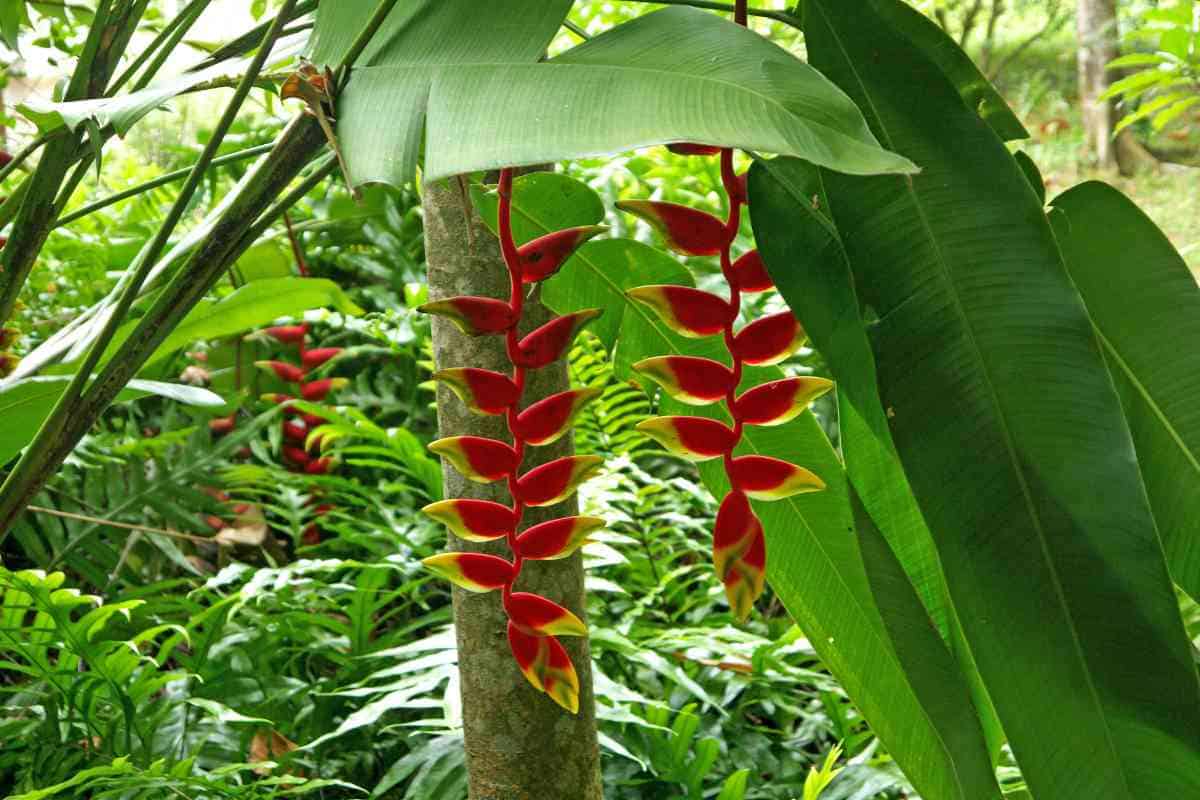Cultivating Culinary Wonders: A Comprehensive Guide to Growing Exotic Edible Plants
The world of edible plants extends far beyond the familiar tomatoes, lettuce, and potatoes. For the adventurous gardener and the culinary enthusiast, the allure of exotic edible plants is undeniable. These plants offer a unique opportunity to expand your palate, experiment with diverse flavors, and bring a touch of the extraordinary to your garden and your table. This comprehensive guide will delve into the exciting world of growing exotic edible plants, providing you with the knowledge and inspiration to cultivate your own culinary paradise.
Why Grow Exotic Edible Plants?
There are numerous compelling reasons to embark on the journey of growing exotic edible plants. Here are a few of the most prominent:
- Culinary Exploration: Perhaps the most immediate benefit is the opportunity to discover and enjoy new flavors and textures. Exotic plants often possess unique and complex tastes that can elevate your cooking to new heights. Imagine the thrill of incorporating fresh, homegrown dragon fruit into a vibrant smoothie or adding the spicy kick of a homegrown wasabi plant to your sushi.
- Nutritional Diversity: Exotic plants frequently boast a different nutritional profile compared to common garden staples. They can provide a wider range of vitamins, minerals, and antioxidants, contributing to a more balanced and healthy diet.
- Gardening Challenge and Satisfaction: Cultivating exotic plants can be a rewarding challenge. Learning about their specific needs, overcoming obstacles, and witnessing their growth and eventual harvest brings a deep sense of satisfaction.
- Aesthetic Appeal: Many exotic plants are visually stunning, adding beauty and interest to your garden. The vibrant colors and unusual shapes of these plants can transform your outdoor space into a captivating landscape.
- Conversation Starter: Growing exotic plants is a fantastic conversation starter. They spark curiosity and provide a unique opportunity to share your passion with others.
Getting Started: Planning Your Exotic Edible Garden
Before you begin planting, careful planning is crucial for success. Consider these factors:
Climate and Zone
The climate in your area is the most significant determining factor in what you can successfully grow. Research your USDA Plant Hardiness Zone to understand the average minimum winter temperatures in your region. This will guide your plant selection. Some exotic plants are well-suited to warmer climates, while others can be grown indoors or in greenhouses in cooler regions.
Sunlight and Space
Assess the amount of sunlight your garden receives. Most edible plants require at least six hours of sunlight per day. Consider the size of your available space. Some exotic plants, such as certain fruit trees, can grow quite large, while others are more compact and suitable for container gardening.
Soil Preparation
Healthy soil is the foundation for healthy plants. Conduct a soil test to determine the pH level and nutrient content of your soil. Amend your soil with compost, manure, or other organic matter to improve drainage, aeration, and fertility. Different plants have different soil preferences, so research the specific needs of the exotic plants you plan to grow.
Plant Selection
Choose plants that are well-suited to your climate, available space, and personal preferences. Consider your culinary interests – what flavors do you enjoy? What dishes do you want to create? Research the specific growing requirements of each plant, including sunlight, water, soil, and potential pests and diseases. Some excellent choices for beginning exotic edible plant growers include:
- Dragon Fruit (Hylocereus undatus): This tropical cactus produces vibrant, delicious fruits with a unique texture. Dragon fruit thrives in warm climates and requires well-draining soil and plenty of sunlight.
- Wasabi (Eutrema japonicum): This pungent root vegetable is a staple in Japanese cuisine. Wasabi prefers partial shade, consistently moist soil, and cool temperatures.
- Kaffir Lime (Citrus hystrix): The leaves of this citrus tree are used in Southeast Asian cooking to add a distinctive citrus flavor. Kaffir lime trees thrive in warm climates and require plenty of sunlight and well-draining soil.
- Galangal (Alpinia galanga): This rhizome is a key ingredient in Thai and Indonesian cuisine, offering a citrusy and earthy flavor. Galangal prefers warm, humid conditions and partial shade.
- Goji Berries (Lycium barbarum): These nutrient-rich berries are packed with antioxidants. Goji berry plants are relatively easy to grow and can tolerate a range of conditions.
Growing Techniques for Exotic Edible Plants
Once you have a plan and your plants, here’s what you need to know:
Starting from Seed or Transplanting
Some exotic plants can be started from seed, while others are more easily propagated from transplants. Research the best method for each plant you choose. Starting seeds indoors can give you a head start, especially in cooler climates. Transplants, purchased from a nursery, offer a faster route to harvest.
Watering
Watering requirements vary depending on the plant and the climate. Generally, exotic plants need consistent moisture, especially during their growing season. Water deeply and regularly, and avoid overwatering, which can lead to root rot. Monitor the soil moisture and adjust your watering schedule accordingly.
Fertilizing
Fertilizing provides essential nutrients for plant growth and fruit production. Use a balanced fertilizer specifically formulated for edible plants. Follow the instructions on the fertilizer package, and avoid over-fertilizing, which can damage your plants. Organic fertilizers like compost tea or worm castings can also be beneficial.
Pruning
Pruning helps to shape your plants, promote air circulation, and encourage fruit production. Research the specific pruning requirements of each plant. Remove dead, damaged, or diseased branches. Prune to maintain the desired shape and size of your plants.
Pest and Disease Control
Exotic plants can be susceptible to pests and diseases. Regularly inspect your plants for signs of infestation or disease. Employ preventative measures, such as companion planting, crop rotation, and proper sanitation. If pests or diseases appear, use organic pest control methods, such as insecticidal soap or neem oil, to minimize harm to beneficial insects and the environment.
Specific Plant Profiles: Cultivation Tips and Tricks
Let’s dive into some specific examples, offering tailored guidance for each:
Dragon Fruit (Hylocereus undatus)
Climate: Thrives in warm, tropical climates (Zones 9-11). Can be grown in containers in cooler regions, brought indoors during winter.
Sunlight: Requires full sun (at least 6 hours per day).
Soil: Well-draining soil is crucial. A mix of potting soil, sand, and compost is ideal.
Watering: Water deeply when the soil is dry to the touch. Avoid overwatering.
Support: Dragon fruit vines need support, such as a trellis or sturdy post.
Harvest: Fruits are ready to harvest when the skin turns a vibrant color and the scales are slightly dry. Gently twist the fruit from the vine.
Wasabi (Eutrema japonicum)
Climate: Prefers cool, shady environments. Can be grown in Zones 6-9 with appropriate protection.
Sunlight: Requires partial shade (filtered sunlight).
Soil: Needs consistently moist, well-draining soil rich in organic matter.
Watering: Keep the soil consistently moist, but not waterlogged.
Pest Control: Monitor for slugs and snails, which can damage the leaves. Use organic slug and snail control methods.
Harvest: Harvest the rhizome (root) after 18-24 months. Grate the rhizome fresh for use.
Kaffir Lime (Citrus hystrix)
Climate: Warm climates (Zones 9-11). Can be grown in containers and brought indoors in colder areas.
Sunlight: Requires full sun (at least 6 hours per day).
Soil: Well-draining soil is essential. Use a citrus potting mix or amend your soil with sand and compost.
Watering: Water deeply when the soil surface is dry. Allow the soil to dry slightly between waterings.
Pruning: Prune to shape the tree and remove dead or damaged branches.
Harvest: Harvest leaves throughout the growing season. The fruit rind is also used in cooking.
Galangal (Alpinia galanga)
Climate: Warm, humid climates (Zones 9-11). Can be grown in containers in cooler regions.
Sunlight: Prefers partial shade.
Soil: Rich, well-draining soil. Amend with compost.
Watering: Keep the soil consistently moist, but not waterlogged.
Propagation: Propagate by dividing the rhizomes.
Harvest: Harvest the rhizomes when the plant is mature (typically after one year).
Goji Berries (Lycium barbarum)
Climate: Tolerant of a wide range of climates (Zones 3-10). Adaptable and relatively easy to grow.
Sunlight: Requires full sun.
Soil: Well-draining soil. Tolerant of various soil types.
Watering: Water regularly, especially during dry periods.
Pruning: Prune in late winter or early spring to encourage new growth and fruit production.
Harvest: Harvest the berries when they are ripe and red. Be careful, as the berries are delicate.
Container Gardening: Growing Exotic Plants in Limited Spaces
Container gardening is an excellent option for growing exotic edible plants, especially if you have limited space or live in a cooler climate. Here are some tips:
- Choose the Right Containers: Select containers that are appropriate for the size of the plant. Ensure the containers have drainage holes to prevent waterlogging.
- Use a Quality Potting Mix: Use a well-draining potting mix specifically formulated for container gardening.
- Water and Fertilize Regularly: Container plants require more frequent watering and fertilizing than plants grown in the ground.
- Provide Adequate Sunlight: Place your containers in a location that receives the appropriate amount of sunlight for each plant.
- Consider Mobility: Use containers with wheels to easily move your plants to take advantage of optimal sunlight or to protect them from frost.
Overwintering Exotic Plants
If you live in a climate with cold winters, you may need to overwinter your exotic plants. Here are some strategies:
- Bring Plants Indoors: If your plants are in containers, bring them indoors before the first frost. Place them in a bright, sunny location.
- Provide Adequate Light: Supplement natural light with grow lights if necessary.
- Reduce Watering: Reduce watering during the winter months, as plants require less water when they are not actively growing.
- Protect from Frost: If your plants are in the ground, protect them with frost cloth or mulch.
- Consider a Greenhouse: A greenhouse can provide a controlled environment for overwintering your exotic plants.
Common Challenges and Troubleshooting
Growing exotic plants can present some challenges. Here’s how to address some common problems:
- Pests: Identify pests and use appropriate control methods (organic options are preferred).
- Diseases: Prevent diseases by providing good air circulation, avoiding overwatering, and removing diseased plant parts.
- Poor Fruiting: Ensure your plants are receiving adequate sunlight, proper fertilization, and pollination (if necessary).
- Yellowing Leaves: Yellowing leaves can indicate overwatering, underwatering, nutrient deficiencies, or pest infestations. Diagnose the cause and take corrective action.
- Lack of Growth: If your plants are not growing, they may need more sunlight, fertilizer, or water. Check your soil pH and amend as needed.
Embracing the Exotic: Expanding Your Culinary Horizons
Growing exotic edible plants is more than just a gardening hobby; it’s an adventure. It’s a chance to connect with different cultures, experiment with new flavors, and create a truly unique culinary experience. The journey may involve some research, experimentation, and a bit of patience, but the rewards – the fresh, flavorful harvests and the satisfaction of nurturing these extraordinary plants – are well worth the effort.
So, embrace the exotic. Explore the fascinating world of unusual edibles. Start small, experiment with different plants, and most importantly, enjoy the process. Your taste buds and your garden will thank you.
Resources for Further Exploration
To continue your journey, here are some helpful resources:
- Local Nurseries: Visit your local nurseries to find exotic plants and get advice from experienced gardeners.
- Online Gardening Forums: Connect with other gardeners online to share tips and ask questions.
- Books and Websites: Research specific plants and their growing requirements using gardening books and websites.
- Seed Catalogs: Explore seed catalogs for a wide variety of exotic plant seeds.
Happy gardening, and bon appétit!


